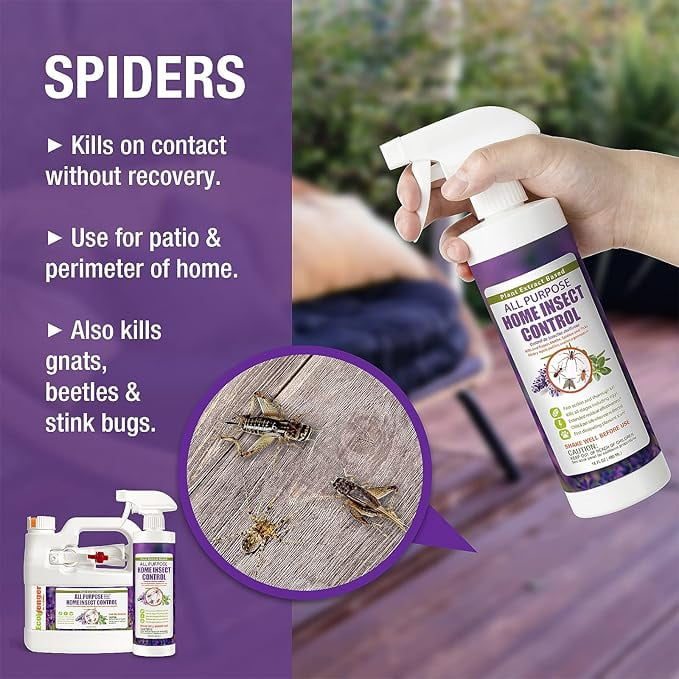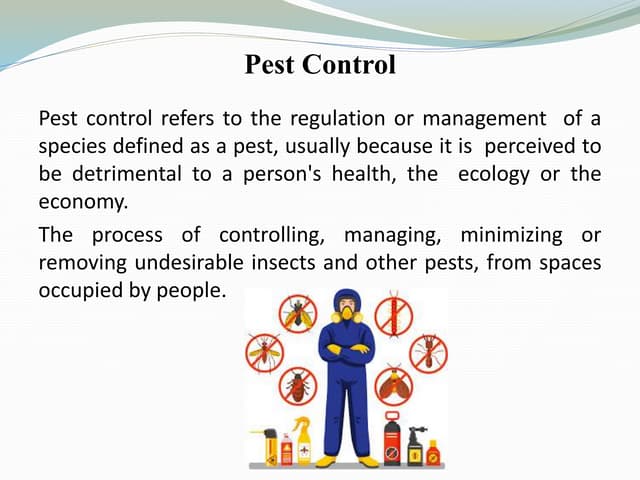The Ultimate Guide To Pestwise
The Ultimate Guide To Pestwise
Blog Article
Not known Facts About Pestwise
Table of ContentsLittle Known Facts About Pestwise.The Single Strategy To Use For PestwiseNot known Details About Pestwise The Definitive Guide for PestwiseSome Known Details About Pestwise The smart Trick of Pestwise That Nobody is DiscussingFascination About Pestwise6 Simple Techniques For PestwiseWhat Does Pestwise Do?10 Easy Facts About Pestwise Described
A microorganism should not be thought about a pest up until it is proven to be one. Groups of insects include: constant bugs that arc virtually always existing and call for routine control.Accurate recognition is the very first step in an efficient pest management program. Never ever try a pest control program till you ensure what the parasite is. Commercial Pest Control. The more you understand about the pest and the elements that influence its advancement and spread, the simpler, a lot more cost-efficient, and more effective your bug control will be
Pestwise for Dummies
As a qualified applicator, you should be acquainted with the parasites you are most likely to run into in the kind of job in your accreditation category. To be able to determine and regulate bugs, you require to understand: the physical features of the bugs most likely to be run into. features of the damages they create, their growth and biology, whether they are continual, occasional.
Create as little injury as feasible to everything except the insect. It can cost more to manage the bug than would be lost since of the bug's damage.
Pestwise for Beginners

If such problems exist, you can take actions to stop the plant condition microorganisms from harming the preferable plants. is a common objective in numerous pest scenarios. The intent is to decrease the number of insects to a level where the damage they are causing is acceptable. When a parasite's presence is identified and the choice is made that control is needed, suppression and avoidance typically are joint objectives.
is an uncommon objective in exterior parasite scenarios, because it is hard to accomplish. Typically the goal is avoidance and/or reductions. Elimination is sometimes tried when an international parasite has actually been mistakenly introduced but is not yet established in a location. Such obliteration techniques usually are supported by the Government.
The Best Strategy To Use For Pestwise
Confined settings typically are smaller, much less complex, and a lot more quickly controlled than exterior areas. In numerous enclosed areas, such as residences; schools; workplace buildings; and wellness care, food handling, and food prep work facilities, specific parasites can not or will not be tolerated.
Thresholds may be based upon esthetic, health and wellness, or economic considerations. These degrees, which are understood as "activity limits," have been identified for numerous insects. A threshold often is evaluated the degree where the financial losses triggered by insect damages, if the pest population proceeded to expand, would be better than the price of regulating the bugs.
The existence of any kind of rodents in food processing facilities forces action. In homes, people normally do something about it to control some bugs, such as rodents or roaches, also if just one or a few have been seen. In many pest control scenarios, the area to be shielded ought to be kept track of (inspected or searched) usually.
A Biased View of Pestwise

As an example, there is zero tolerance for the existence of bacteria in operating rooms and various other sterile areas of health treatment facilities. In these scenarios, routine pest control actions are taken to prevent insects from getting in a location and to get rid of any bugs that may be existing. Pest control involves greater than merely determining a pest and making use of a control strategy.
Every one of these might be affected by the parasite control determines you choose. Unless you consider the possible effects on the entire system within which the insect exists. your bug control initiative might trigger harm or lead to proceeded or new bug problems. Depend on your very own good judgment and, when chemicals belong to the method, on the pesticide labeling.
The smart Trick of Pestwise That Nobody is Discussing
The actions of every kind of microorganism or part sharing the website generally affect the actions and wellness of lots of others. When the equilibrium is interfered with, certain microorganisms may be destroyed or decreased in number, and others sometimes anchor the parasites - might dominate. Integrated bug administration is the combining of ideal parasite control tactics into a single plan (approach) to reduce insects and their damage to an acceptable level.
Relying just on chemicals for parasite control can trigger insects to create resistance to chemicals, can cause outbreaks of other pests, and can harm surfaces or non-target organisms. With some kinds of pests, use of chemicals as the only method will certainly accomplish very inadequate control.
recognize what control techniques are available. review the advantages and dangers of each technique or combination of techniques. pick a technique that will certainly be most efficient and will trigger the least damage to people and the atmosphere. make use of each technique in the strategy correctly. observe local, State, and Federal guidelines that put on the circumstance. Weather problems, particularly temperature level, day length, and moisture, impact parasites' task and their rate of recreation. Parasites might be eliminated or reduced by rainfall, freezing temperature levels, dry spell, or various other damaging weather.
9 Easy Facts About Pestwise Explained
Birds, reptiles, amphibians, fish, and mammals feed on some parasites and help control their numbers. Lots of aggressive and parasitic insect and insect-like species prey on other organisms, several of which are bugs. Microorganisms often reduce insect populations. Functions such as mountains and huge bodies of water limit the spread of several bugs.
Pest populations can grow just as long as their rood and water supply lasts. As soon as the food source - plant or animal - is exhausted, the parasites pass away or become inactive.
Facts About Pestwise Revealed
All-natural controls usually do not control insects swiftly or entirely enough to avoid inappropriate injury or damages. Other control steps need to be used. Those available consist of: host resistance, biological control, social control, mechanical control, hygiene, and chemical control. Some plants, pets, and structures withstand insects better than others.
Use of immune kinds, when readily available, aids keep insect populations below dangerous levels by making conditions less desirable for the bugs. Host resistance operates in 3 main means: Chemicals in the host ward off the bug or protect against the insect from completing its life cycle. The host is more vigorous or tolerant than other varieties and hence much less likely to be seriously damaged by parasite strikes.
The Ultimate Guide To Pestwise
Organic control includes the use of all-natural opponents bloodsuckers, predators, and pathogens. You can supplement this all-natural control by releasing more of a pest's opponents into the target area or by presenting brand-new adversaries that were not in the area before. Organic control usually is not obliteration. The degree of control changes.
Yet, under appropriate conditions, sufficient control can be achieved to remove the danger to the plant or animal to be secured. Organic control likewise includes techniques through which the pest is biologically altered, as in the manufacturing and release or great deals of sterilized males and the use of pheromones or adolescent hormonal agents.
Put in a trap. they can bring in the pests in a sample location to make sure that pest numbers can be estimated. Pheromones also can be a control device. In some cases a produced copy of the pheromone that a female bug utilizes to bring in men can be used to confuse males and prevent breeding, leading to reduced numbers of parasites.
Getting The Pestwise To Work
(https://giphy.com/channel/pestwise01)Cultural methods occasionally are made use of to reduce the numbers or parasites that are striking grown plants. These techniques alter the atmosphere, the condition of the host plant, or the behavior of the parasite to avoid or suppress an infestation. They disrupt the normal relationship in between the parasite and the host plant and make the pest much less most likely to make it through, grow, or duplicate.
Instruments, makers, and other techniques used to control pests or change their environment arc called mechanical or physical controls. Catches, displays, obstacles, fencings, nets, radiation, and power often can he utilized to avoid the spread or bugs into a location. Lights, warm, and refrigeration can alter the atmosphere enough to subdue or remove some pest populaces.
Report this page